Choosing images for this week’s Sepia Saturday was quite easy.
The challenge was to show a quartet of photos using the themes of towns, hotels or main streets. I knew immediately that I wanted to look at four hotels in Wangaratta. At first I wanted to feature four different hotels but all the hotels in Wangaratta are so fascinating I realised I couldn’t do them justice in one post. I decided on four images of the Sydney Hotel that was built on the site of William Henry Clark‘s Hope Inn.
William Henry Clark owned, and held the license of a hotel named the Hope Inn on the corner of Ovens and Templeton Streets in Wangaratta from the late 1830s until some time after March 1855 when the last newspaper report in the Ovens & Murray Advertiser that placed him there was published. Clark removed himself to the far more salubrious surroundings of his new brick two storey Commercial Hotel in Murphy Street by mid 1855, and in 1859 the old Hope Inn was burnt down. Either a new timber house was built on the site, or a building survived the fire. This building and land was leased by William Painter who ran a restaurant there before opening the Sydney Hotel in March 1865.
Sydney Hotel courtesy Museum Victoria
After Painter, the re-named Sydney Hotel went through a series of owners, many of whom placed their own mark on the building. When the more recent O’Keefe family owned the hotel they maintained a website that included a list of the owners and licensees of the Sydney Hotel, but as from 2017 this website was no longer available after the hotel was sold to the RSL. It was inspiring to find a business that appreciated and had taken the trouble to investigate the history of the building of which it was custodian. After the shingle roofed building shown in the first image, the hotel was modernised and expanded before 1903 when Henry Campbell took it over.
Campbell’s Sydney Hotel c1895 courtesy Museum Victoria. A Zaetta is credited with this image but he operated in Wangaratta in the 1940s. It is most likely that he copied the image by creating a negative of the damaged original.
The different roof line to the right clearly indicates an addition, and the veranda on the far left has been enclosed and the entire place bricked up. However the five veranda posts across the front and the older style roof line echo the Sydney Hotel of the late 1860s. It would be nice to locate a better version of this image to see if a chimney lines up with that of the earlier hotel.
In 1909 Henry Campbell called for tenders for extensions and a new frontage for the hotel. The delightful art nouveau Sydney Hotel was the result.
Sydney Hotel 1917 by Courtney’s Thelma Studios. Courtesy Museum Victoria
Sydney Hotel by Courtney’s Thelma Studios.
In 1941 Christopher William O’Keefe commenced major renovations, although no renovations could obliterate the old roof line of the original 1860s hotel. The result of the renovations was that the beautifully styled and tuck-pointed building seen above was turned into a streamlined, and modern but nonetheless austere building.

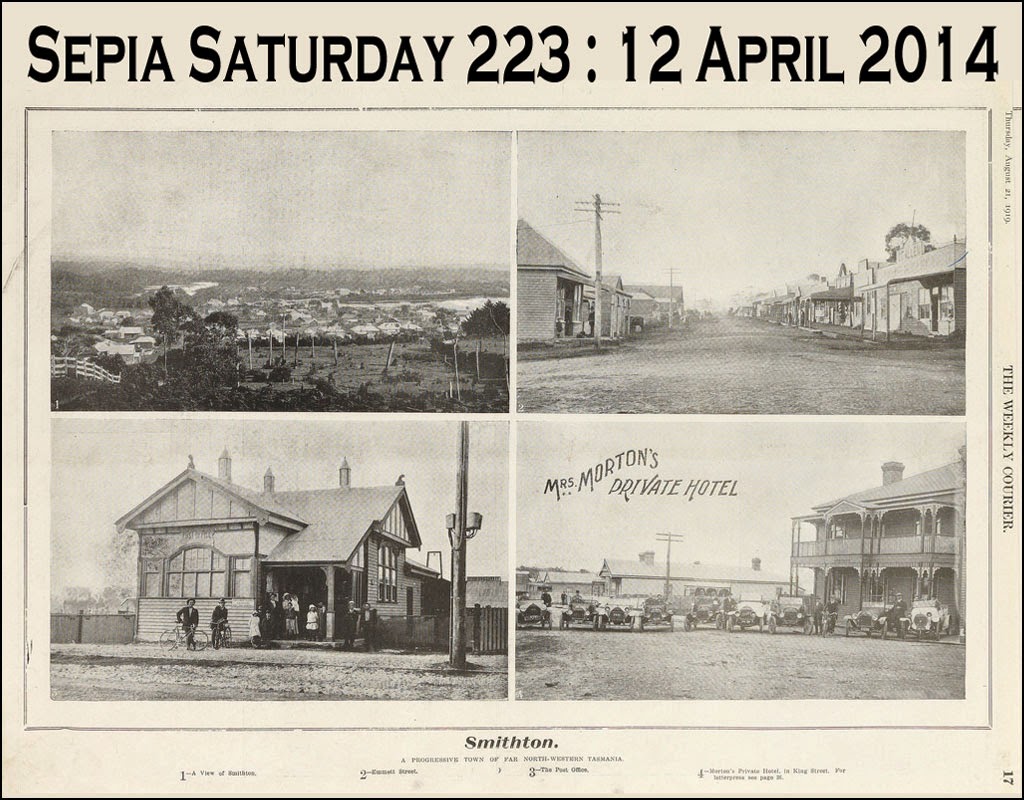

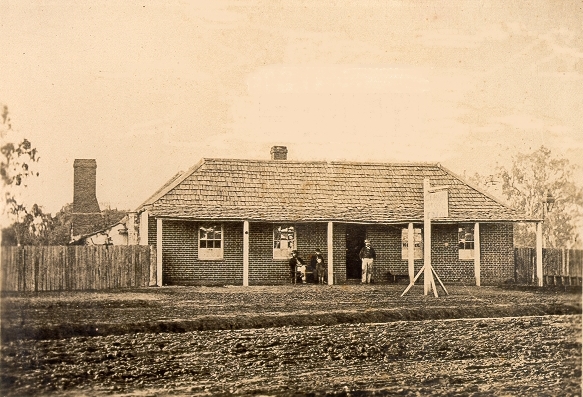
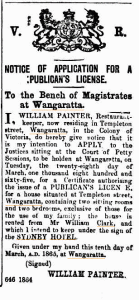


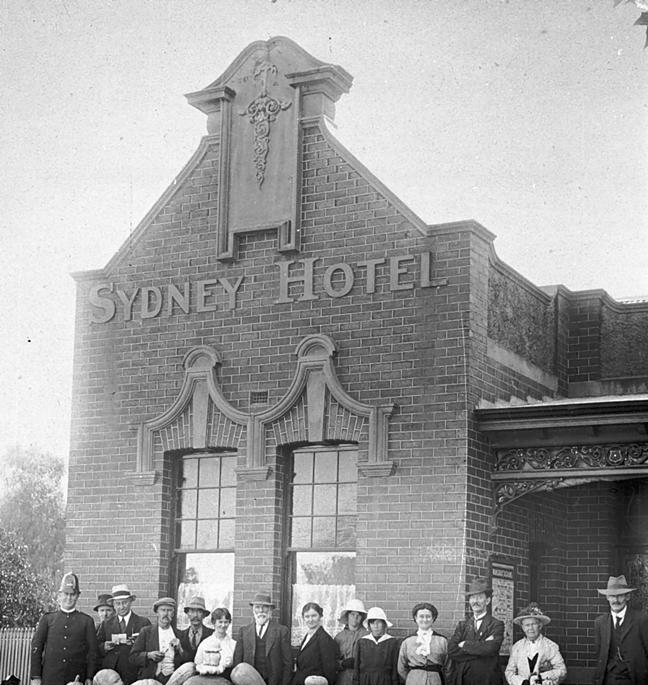
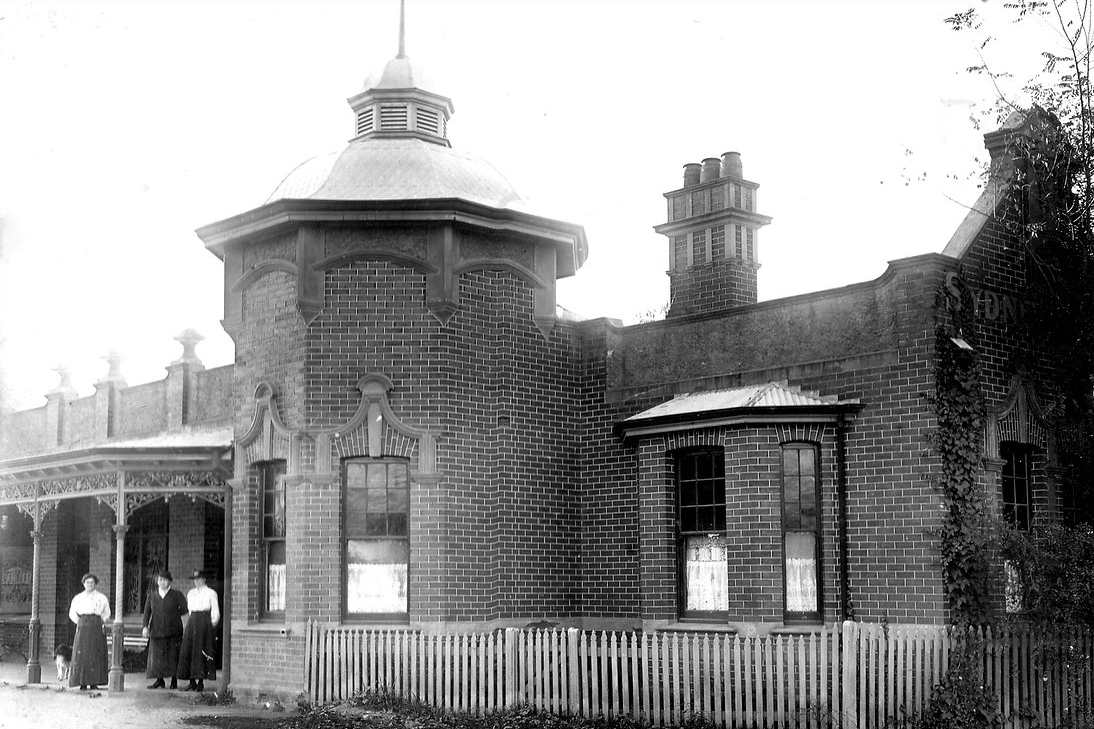
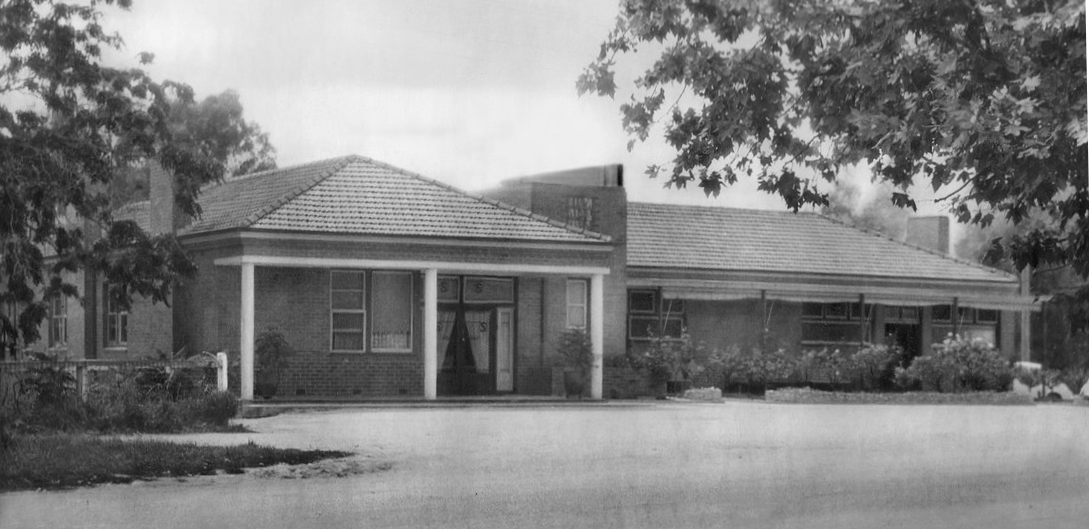




Oh dear there is no sign of the old hotel in the new hotel is there?
Very interesting and well-researched history of this hotel. It certainly looked much better in its ealier days! An ancestor of mine owned a pub called the Hope Inn near Windsor Castle in the 1830s – 1840s, which ceased business when land was resumed for the Crown as private property.
I noticed there were a few Hope Inns around Jo. Any idea of the origin of the name?
I found this very interesting as we ate at the Sydney Hotel of modern day, very recently. Coincidently, my post this week is just up the road at Albury 🙂
An interesting study Jenny. I like the format of your quartet too.
The photo collage was easy Lorraine. I used http://www.fotor.com/features/collage.html
and it was free 🙂
Thanks for the tip re using fotor, looks a good program to use.
I really enjoyed this, and I visited google and was tempted to post in this direction as well, but too short of time. Since I’m researching things close to home here, I posted that way!
The latest version looks so common. I wonder what the next one will look like.
Mr. O’Keefe really modernized the exterior into bland, didn’t he?
Bland is a kind word to use for it Barb! 😉
Oh, the old hotel was much grander, yes? Funny what we do in the name of “progress,” isn’t it?
I too enjoyed seeing the one hotel over time and reading the history of it. I wanted to do what you did with this theme, but I just couldn’t pull it together. Now I’m jealous.
This is absolutely fascinating. The history of pubs/hotels is so often the history of communities and it doesn’t matter whether they are down the road in my local town or on the other side of the world, I find them all equally fascinating.
The more modern version is probably more practical in several important ways. Still and all, what a shame.
The early 20th century version looks most interesting.
Excellent analysis of a series of photographs of the same building, thank you, and might I add what a disappointment the last version is.
Interesting photos of the same building through time. It is fascinating how it changed!